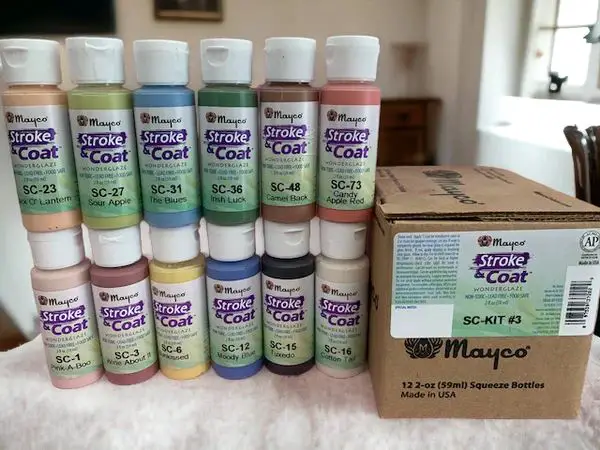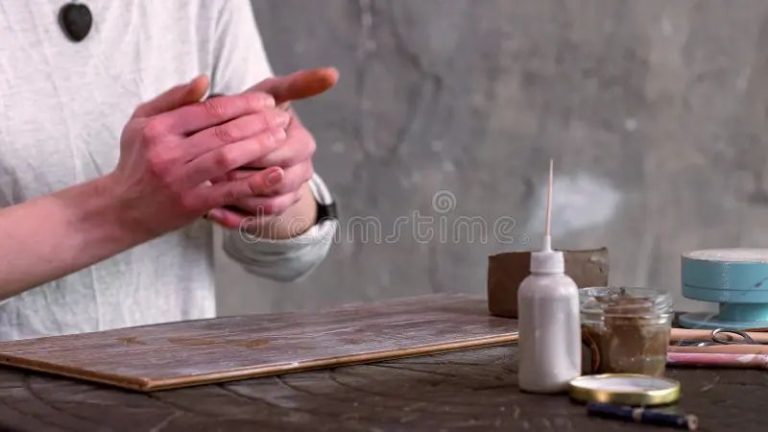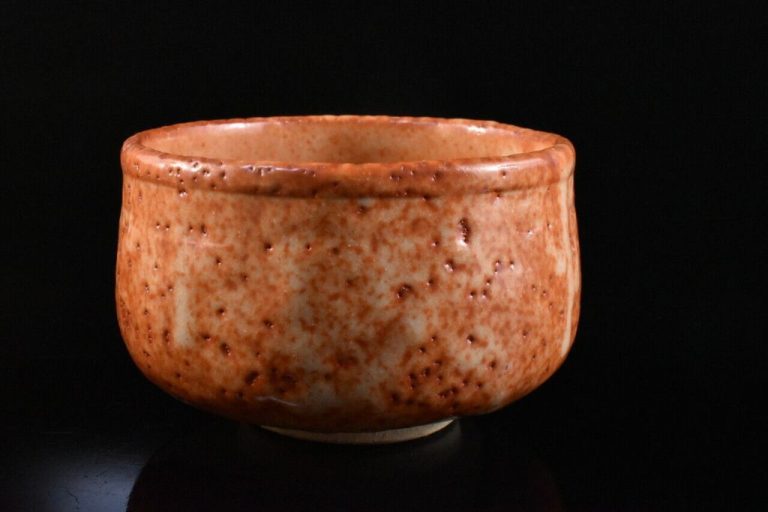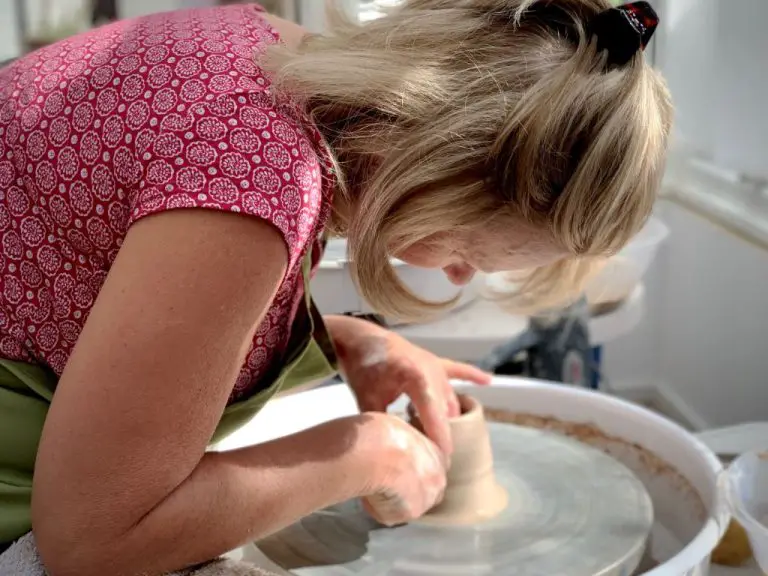Is Mayco Stroke And Coat A Glaze Or Underglaze?
Introducing Mayco Stroke and Coat
Mayco is a global ceramics and porcelain manufacturer that has been pioneers in original colors and glazes for over 60 years (MaycoColors). One of their most popular products is Stroke and Coat, which provides bold, rich underglaze colors ideal for brushwork and detail (Mayco). Stroke and Coat comes in a wide variety of vivid colors and finishes that can be used to hand paint designs on bisqueware before firing and glazing.
Defining Glazes and Underglazes
Glazes and underglazes are two common types of decorative coatings used in pottery and ceramics. Here’s an overview of what each one is:
Glazes are glass-like coatings that are applied to bisqueware or greenware. When fired in a kiln, the glaze melts and fuses to the clay body to form a glossy, watertight surface. Glazes can come in many colors and textures to add beauty and durability to finished ceramic pieces.
Underglazes are made from metal oxides, clay, and other minerals suspended in a flux solution. They are used to decorate bisqueware before applying a transparent glaze overtop and firing again. Underglazes allow potters to add intricate designs in vivid colors before glazing. When fired under a glaze, the underglaze becomes permanent.
The key differences are:
- Glazes create a glassy coating, while underglazes soak into the clay body.
- Glazes can be used on their own, but underglazes must be covered with a glaze before firing.
- Glazes make pieces watertight, but underglazes alone do not.
- Glazes fuse to clay at high temperatures, underglazes chemically bond when fired under a glaze.
- Glazes give an overall color, while underglazes allow for intricate designs.
So in summary, glazes and underglazes serve different decorative purposes in pottery but work together to create beautiful finished results.
Mayco Stroke and Coat is an Underglaze
Mayco Stroke and Coat is classified as an underglaze due to its properties and intended uses. Underglazes are opaque ceramic colors that are applied to pottery before a clear glaze is added on top. According to the Mayco website, Stroke and Coat is a “heavily pigmented, viscous glaze line that can be used for brush strokes or opaque coverage” (https://www.maycocolors.com/color/fired/stroke-coat/).
There are a few key properties of Stroke and Coat that make it an underglaze rather than a glaze:
- It is very opaque and completely covers the clay surface.
- It can be applied to greenware, bisqueware, or earthenware before glazing.
- It needs a transparent glaze applied on top to make it food safe and functional.
- It is designed to interact with glazes in creative ways like bleeding, crawling, and crazing.
So in summary, Stroke and Coat is considered an underglaze because it is an opaque colorant that gets applied before glazing. The thick viscosity allows it to hold brush strokes and texture when used as an underglaze.
Using Stroke and Coat as an Underglaze
Stroke and Coat can be used as an underglaze in several different ways to create colorful designs before applying a final transparent glaze. According to the Stroke and Coat Application Guide from Mayco, one technique is to use Stroke and Coat on bisqueware before firing by brushing, sponging, or spraying it onto the raw clay surface. The underglaze will absorb into the bisque during firing, creating a permanent design.

Another technique is to carve lines or patterns into an already glazed piece, then apply Stroke and Coat into the carved areas to create colored outlines. As noted on the Ceramics Supplies Now website, Stroke and Coat can be applied over any non-moving glaze, underglaze or Astro Gem surface for this technique. When the carved glazed piece is fired again, the Stroke and Coat will bond within the carved areas.
Stroke and Coat works well on ceramic projects such as mugs, plates, bowls, tiles and figurines that have surfaces suitable for carving lines and patterns before glazing. The underglaze flows nicely into carved areas to highlight designs. Stroke and Coat also yields bright results when brushed freely on textured bisque pieces before glazing and firing.
Why Not Use Stroke and Coat as a Glaze?
While some ceramic artists do occasionally use Stroke and Coat as a glaze for certain effects, there are a few reasons why it is not recommended for use as a true glaze:
First, Stroke and Coat is formulated to be matte instead of glossy, so it does not provide the glassy finished surface expected from most glazes. Using Stroke and Coat alone can result in a piece with a dull, unfinished look.
Additionally, according to users on the Ceramic Arts Daily forums (https://community.ceramicartsdaily.org/topic/31612-mayco-stroke-and-coat-giving-a-pitted-surface/), Stroke and Coat does not always mature and flux well when used as a glaze. This can lead to issues like cracking, crazing, pitting, or peeling.
Stroke and Coat is also very sensitive to thickness, so it can be tricky to apply evenly as a glaze coat. If applied too thickly, it is prone to crawling, pinholing, bubbling, and other application flaws.
For these reasons, most ceramic artists use Stroke and Coat successfully as an underglaze only, and then apply a clear glaze on top to provide the right protective glassy finish.
Applying a Glaze Over Stroke and Coat
One of the great benefits of using Stroke and Coat as an underglaze is that you can apply a transparent glaze over the top to add more visual interest. The glaze will interact with the underlying Stroke and Coat design to create beautiful effects.
According to the Stroke and Coat Application Guide [1], Mayco recommends applying a transparent glaze like their Series 2000 glazes over the top of Stroke and Coat. The underglaze acts as a coloring agent that the glaze can pick up. Using a complementary glaze color over the Stroke and Coat design creates nice blending effects.
It’s important when applying a glaze over Stroke and Coat to use a product specially formulated as a glaze. Standard glazes melt and fuse to the clay at high temperatures. Underglazes like Stroke and Coat do not. Applying too thick of a layer of Stroke and Coat by itself risks wiping off during firing. The glaze applied on top provides the glassy finish.
When applying the glaze over Stroke and Coat, use a soft brush and lighter touch. Too much glaze risks filling in the carved areas and obscuring the design. Let the glaze interact with the Stroke and Coat instead of covering it up entirely. With the right combination of underglaze and glaze, the results will be stunning.
Tips for Using Stroke and Coat
When using Stroke and Coat, following some best practices can help ensure you get great results.
Application Tips
Be sure to stir Stroke and Coat extremely well before applying. The underglaze particles tend to settle at the bottom of the container. Thorough mixing will help prevent uneven application and clogging issues.
Apply Stroke and Coat in thin, even coats using a soft brush. Too thick of an application can lead to pinholing or the color lifting off the piece during firing. Let each coat dry completely before adding another layer.
Work quickly when painting on leatherhard clay. The clay will begin to stiffen as it dries, making blending more difficult. For best results, limit each painted section to 15-20 minutes of working time.
Avoid overblending or overbrushing when applying Stroke and Coat. The underglaze can become shiny and begin to lift off the clay. Use light, feathery strokes instead.
Firing Tips
Always bisque fire clay to cone 04 before applying Stroke and Coat. Firing to a higher cone will help harden the clay and prevent pinholing issues.
Use witness cones to confirm your kiln is reaching the proper temperature. Stroke and Coat is formulated for cone 06 oxidation. Firing too low can prevent the underglaze from developing its full color and bonding with the clay surface.
Slow cooling the kiln will help prevent crazing issues with Stroke and Coat. Try cooling at no more than 100°F per hour once the kiln is below 1000°F.
Avoid firing Stroke and Coat faster than the recommended schedule. Rapid temperature changes can cause cracking or shivering.
Be sure kiln shelves and stilts are free of old glaze drips before firing. Contamination from other glazes can cause bubbling or cratering issues with Stroke and Coat.
Stroke and Coat Design Inspiration
The versatile nature of Stroke and Coat underglaze lends itself to all sorts of creative applications. Artists and crafters have used Stroke and Coat in many innovative ways to produce stunning ceramic projects.
One of the most popular techniques is blending Stroke and Coat colors directly on the bisque to create gradients, ombré effects, and color transitions. The underglaze’s creamy consistency allows colors to blend seamlessly. See examples of blending Stroke and Coat at https://www.pinterest.com/pin/2225764065811210/.
Stroke and Coat can also be used to hand paint intricate designs like flowers, animals, landscapes, and abstract patterns. The thick underglaze is great for holding fine lines. Check out hand painted projects using Stroke and Coat at https://www.pinterest.com/pin/222576406581620/ and https://www.pinterest.com/pin/222576406584374/.
You can also use Stroke and Coat to create faux stain glass effects by painting bold outlines and filling them with transparent glazes. The possibilities are endless with this versatile underglaze!
Frequently Asked Questions
Here are answers to some of the most common questions about Mayco Stroke and Coat:
Is Stroke and Coat food safe?
No, Stroke and Coat is not food safe and should not be used on any surfaces that will come into contact with food. The product contains lead and other toxic metals that can leach into food (Mayco Stroke and Coat Product Page).
Can Stroke and Coat be used on bisqueware?
Yes, Stroke and Coat can be applied directly to bisqueware. Be sure to shake the bottle well before applying 2-3 thin coats with a soft brush, allowing each coat to dry completely (Stroke and Coat Application Guide).
How do I get rid of brush strokes with Stroke and Coat?
To minimize brush strokes, apply Stroke and Coat in thin, even coats using a soft brush. Let each coat dry fully before adding the next. You can also thin the Stroke and Coat slightly with water to improve flow and coverage.
Can Stroke and Coat be used over colored slips or underglazes?
Yes, Stroke and Coat is formulated to be used over colored slips and underglazes. The opacity of the colors may be subtly affected depending on what is underneath. Test on a tile first for the desired effect.
What is the difference between Stroke and Coat and Wonderglazes?
Stroke and Coat has more intense, saturated colors than Wonderglazes. Wonderglazes are translucent and formulated to layer together, while Stroke and Coat is opaque and provides solid coverage (Mayco Stroke and Coat Product Page).
Can Stroke and Coat go over a fired glaze?
No, Stroke and Coat cannot be applied over an already-fired glaze. It is specially formulated to be applied to bisqueware before firing.
The Takeaway on Stroke and Coat
In summary, Mayco Stroke and Coat is an underglaze, not a true glaze. While it has heavy pigmentation similar to a glaze, Stroke and Coat must be fired before applying an actual glaze on top for the finished ware to be food safe and functional.
The highly pigmented nature of Stroke and Coat makes it ideal for painting smooth, opaque designs, draped effects, and detailed patterns on bisqueware. When layered, it can create speckled textures and faux stained glass effects. As an underglaze, Stroke and Coat shines when used in combination with transparent glazes fired over the top. This gives potters the best of both worlds – vibrant colors and patterns from the underglaze, with the glossy finish of a glaze sealing the ware.
In the end, Stroke and Coat delivers bold, beautiful underglaze designs to bisqueware when used properly. Knowing its limitations as an underglaze vs true glaze allows potters to fully leverage its artistic potential.



